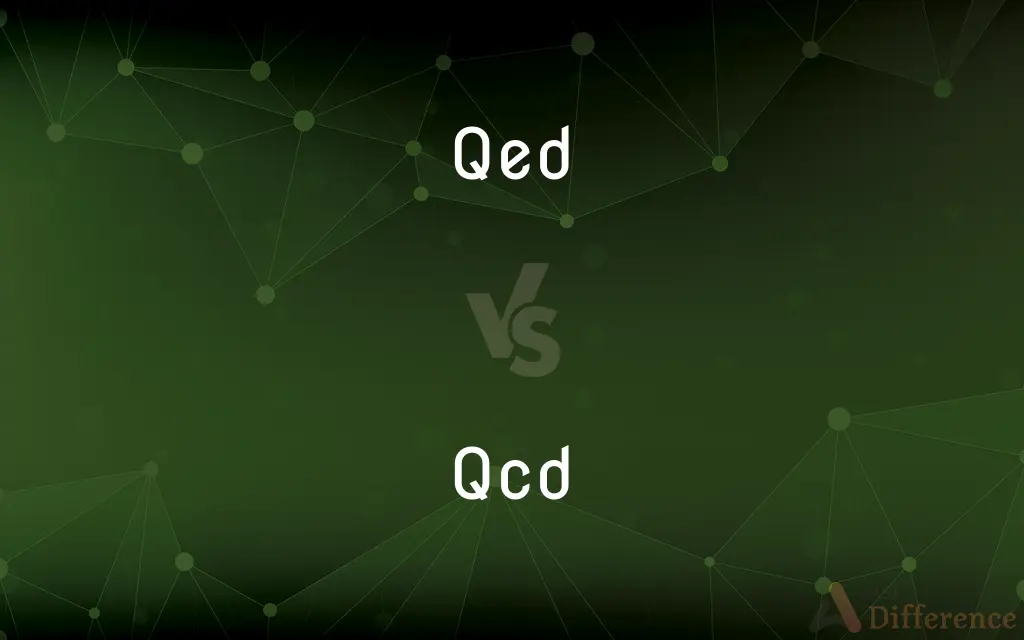Quantum Electrodynamics (QED) and Quantum Chromodynamics (QCD) stand as two pillars of the Standard Model of particle physics, each addressing distinct forces that govern the behavior of the microscopic world. While QED elucidates the interaction between charged particles through the exchange of photons, QCD describes the strong force binding quarks and gluons within protons and neutrons. The precision of these theories, particularly when juxtaposed, serves not merely as an exercise in academic comparison, but rather as a gateway to deeper insights into the fundamental mechanics of our universe.
At the crux of the discourse surrounding the precision of QED and QCD lies the concept of “precision measurements.” QED, having been thoroughly tested over decades, boasts a stunning accuracy that challenges the limits of experimental physics. The relative strength of the electromagnetic force allows for comprehensive theoretical refinements. Advanced calculations yield results that align closely with empirical data, with the anomalous magnetic moment of the electron serving as a quintessential example. Measurements of this quantity have reached an uncertainty of only parts per trillion, amounting to an impressive agreement between theory and experiment.
On the other hand, QCD, despite its compelling explanatory power regarding the strong force, grapples with intrinsic complexities that hinder straightforward experimental validation. One of the most intriguing aspects of QCD is its non-abelian gauge symmetry, differentiating it from QED and leading to phenomena like confinement—where quarks are never found in isolation. The complexities of QCD emerge notably in the form of intricate calculations that are significantly more challenging than those encountered in QED, often requiring numerical simulations via lattice QCD.
The clarity afforded by perturbative methods in QED sharply contrasts with the non-perturbative nature of QCD in the strong coupling regime. This disparity raises pivotal questions: How can QCD’s precision be characterized against that of QED? Unlike QED, where perturbative expansions converge rapidly, QCD necessitates a multi-faceted approach. The strengths of QCD can only be gleaned through extensive calculations combined with experimental observations gleaned from high-energy collisions.
One of the remarkable features of QCD’s precision emerges through the study of high-energy collisions, particularly in heavy ion physics, which can reveal insights into the quark-gluon plasma, a state of matter that existed shortly after the Big Bang. This highlights the interplay between precision and foundational understanding; QCD’s predictions can be seen as inherently tied to our broader cosmological comprehension. Yet, as one delves deeper into precision determinations in QCD, they encounter the stark realization that quantifying its parameters, like the strong coupling constant, remains a vexing challenge.
The landscape of QCD’s theoretical framework is often laden with uncertainties stemming from parameters that encode the intricacies of confinement. These formidably resistant features make QCD’s precise predictions difficult to attain. For instance, the scale at which the strong force becomes prominent typically necessitates understanding non-perturbative effects that do not yield easily to conventional mathematical techniques. As a consequence, there exists a compelling imperative for advances in computational methodologies, such as utilizing GPUs for simulations, to bolster the reliability of QCD predictions.
Both QED and QCD benefit from phenomenological models—while QED is able to rely upon relatively simple diagrams to visualize particle interactions, QCD presents a more intricate tapestry that includes factors such as asymptotic freedom and color charge. The notion of asymptotic freedom, where quarks behave as free particles at high energies, allows a degree of precision that gradually diminishes at lower energy levels. Herein lies an intriguing paradox: as one strives for greater precision in QCD measurements, the enterprise of extracting meaningful predictions becomes increasingly encumbered by the force itself.
Yet, exploratory efforts persist. Innovations in collider technology, particularly those realized at facilities like the Large Hadron Collider (LHC), facilitate unprecedented examinations of QCD phenomena. The ferocious energy levels achievable lead to resonance states that promise to unlock new realms of precision measurements. Investigating processes including jet formation and dijet asymmetries at these higher energies enables researchers to approach the conundrums that plague QCD with renewed vigor.
QED’s intrinsic advantages in precision largely owe to its established framework that is amenable to analysis through well-developed mathematical techniques. Comparatively, QCD’s robustness as a model resides not only in its predictive capabilities but also in its poignancy concerning the human pursuit of knowledge regarding the universe’s structure. The very intricacies that limit QCD’s precision simultaneously enrich its conceptual narrative, making every endeavor to untangle its mysteries a venture rife with potential discovery.
In conclusion, while QED stands as the paragon of precision in theoretical physics, QCD lags owing to its inherent complexities and challenges that demand innovative approaches. Yet, it is through the diligent exploration and quest for precision that our understanding of the universe can evolve. The subtle interplay between QED’s clarity and QCD’s obscurantism not only highlights the multifaceted nature of physics but also points toward a more profound comprehension of the forces at play within the cosmos. Thus, the journey from QED’s pristine accuracy to QCD’s tantalizing challenges is not merely a comparative analysis but an inspiring odyssey into the depths of scientific inquiry that beckons both scholar and layperson alike.












